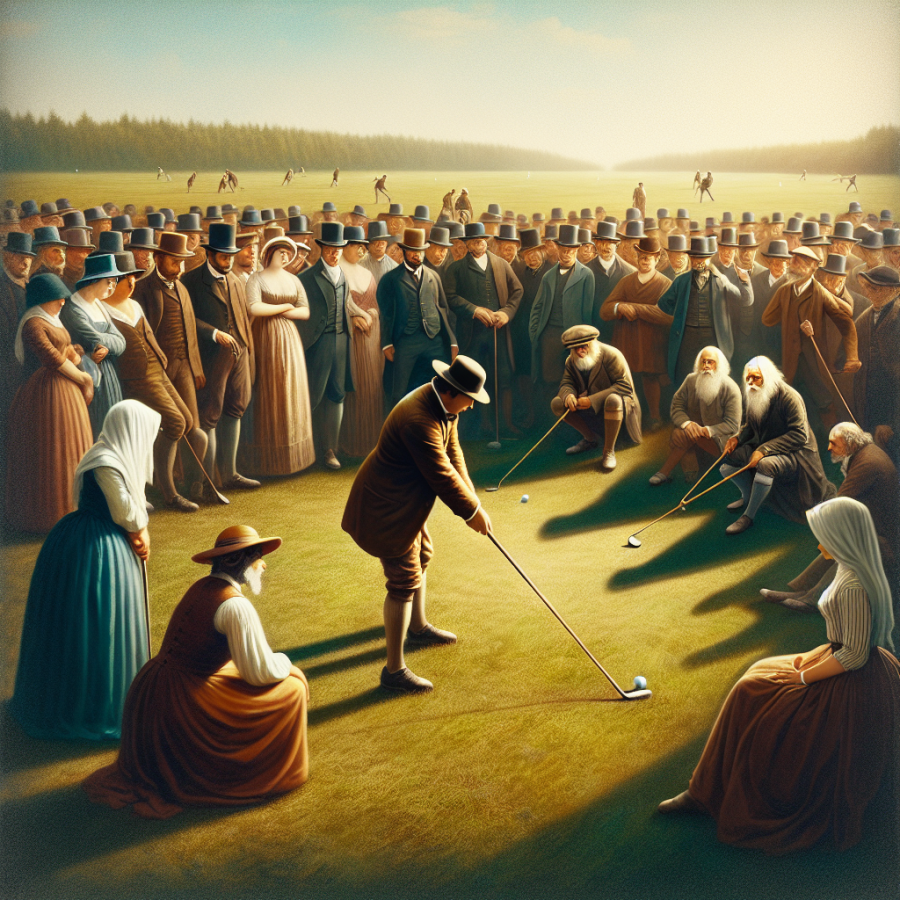Understanding the History: Uncovering the Early Beginnings of Golf
The history of golf is steeped in mystery, myth, and debate. Today, we appreciate golf as a beloved sport played in lush green landscapes using clubs to hit balls into a series of holes. But the origins of golf are a little more elusive, traced back hundreds of years to varying locations across the globe.
Many historians argue that the true origins of golf can be found in the Roman Empire. The Romans loved playing sporting games, which led historians to believe they could have introduced an early form of golf. The ancient game of paganica involved players using a bent stick to hit a leather ball. The players' objective was striking the ball into a target several hundred yards away. The Romans took their empire across Europe, which could explain how golf became widespread.
However, the majority reports opine that golf originated from the medieval period in Scotland around the 15th century. It's important to note that, at this time, the game didn't resemble the golf we know today. It involved only shepherds knocking stones into rabbit holes using their crooks. But it laid out the groundwork for what would evolve into the modern sport of golf.
The earliest official mention of golf came through an Act of the Scottish Parliament in 1457. The sport was declared unlawful as it was seen as a distraction from archery, a crucial military skill. The ban was lifted in 1502 when King James IV of Scotland, a golf enthusiast himself, retracted the prohibition.
During the mid-18th century, St. Andrews Society of Golfers was established, which formed the basic rules and conduct of the game. These regulations, which included the 18-hole round, are still playable concepts in modern golf. St. Andrews is often referred to as the 'Home of Golf', having been played on the Links at St. Andrews since around 1400 AD.
The 19th century was a pivotal period for golf. The introduction of the gutta percha ball - or 'guttie' - in 1848 dramatically altered the sport, making it more accessible to the masses. It was more durable and cheaper to produce than the previous feather-filled leather golf balls.
The game was brought to America by Scottish immigrants, and by the late 19th century, amateur and professional tournaments were being established. The founding of the Professional Golfers' Association of America in 1916 further normalized the sport, making it an integral part of American culture.
Read also:
Maximizing Results: The Role of Competitive Training in Sports
Strides of Time: Moving Towards the Modern Era of Golf
Exploring the chronicle of golf will take us through an engrossing journey, a ride through time itself. The game's core ethos has been maintained over the centuries, even though it's vastly changed and improved the manner in which it is played.
Delving into the 19th Century, it was during this period that the pivotal advancements in golf's history were made. This was a time of innovation when the pioneers introduced golf balls known as "gutties," made from the sap of the Gutta tree. These balls were not only faster but cheaper to manufacture and more resilient as well than their predecessors known as featheries. It was a revolution for the less affluent group of golfers who could now afford to play the game, and it increased the popularity of golf exponentially across Scotland and England.
Then came the 20th Century, replete with significant advancements that helped shape the modern game of golf. The rapid evolution of technology and manufacturing brought around the invention of steel-shafted golf clubs, replacing the traditional hickory shafts. This development in the 1930s increased the distance the ball could travel, transforming the game forever.
The 1950s marked another milestone in the history of golf with the advent of television. The game began being broadcasted to millions of homes around the world, a shift that considerably broadened golf’s fanbase, ushering in massive corporate sponsorships and creating golf celebrities.
Later on in the late 1990s, as the age of technology truly began to unfold, the world of golf welcomed the inclusion of advanced equipment. This era witnessed the rise in popularity of titanium clubs and multi-layered balls. Golfers could now swing with more power and precision, with these new inventions promising enhanced performance.
The onset of the 21st century saw no slowdown in golf’s technological revolution. Not only has golf equipment continued to evolve with intricate calibration for optimum speed, swing, and comfort, but golf courses now also boast state-of-the-art maintenance tools and advanced irrigation systems.
Golf’s scoring system also leapt forward into the digital age, with high-tech systems providing instant updates and allowing players to delve into detailed analytics of their game. The emergence of golf simulators has also allowed players and enthusiasts to enjoy the game without stepping onto the green, revolutionizing golf practice and training.




